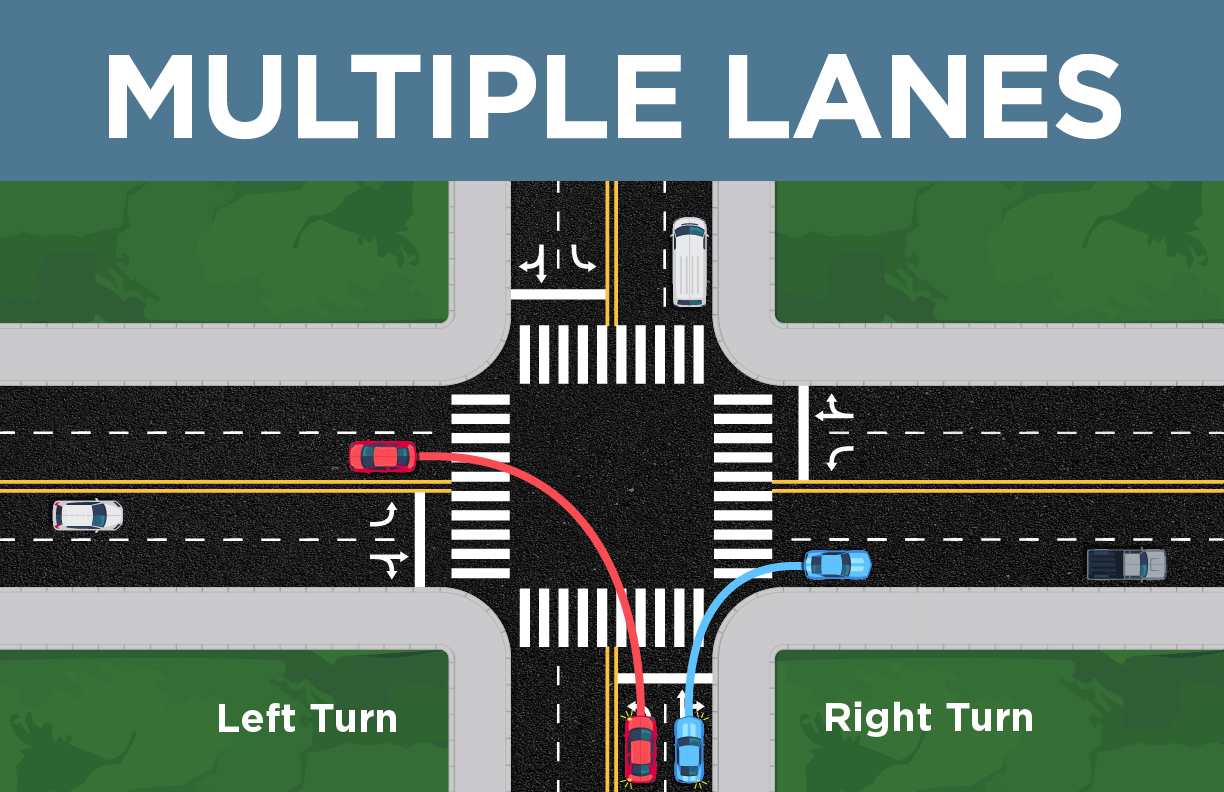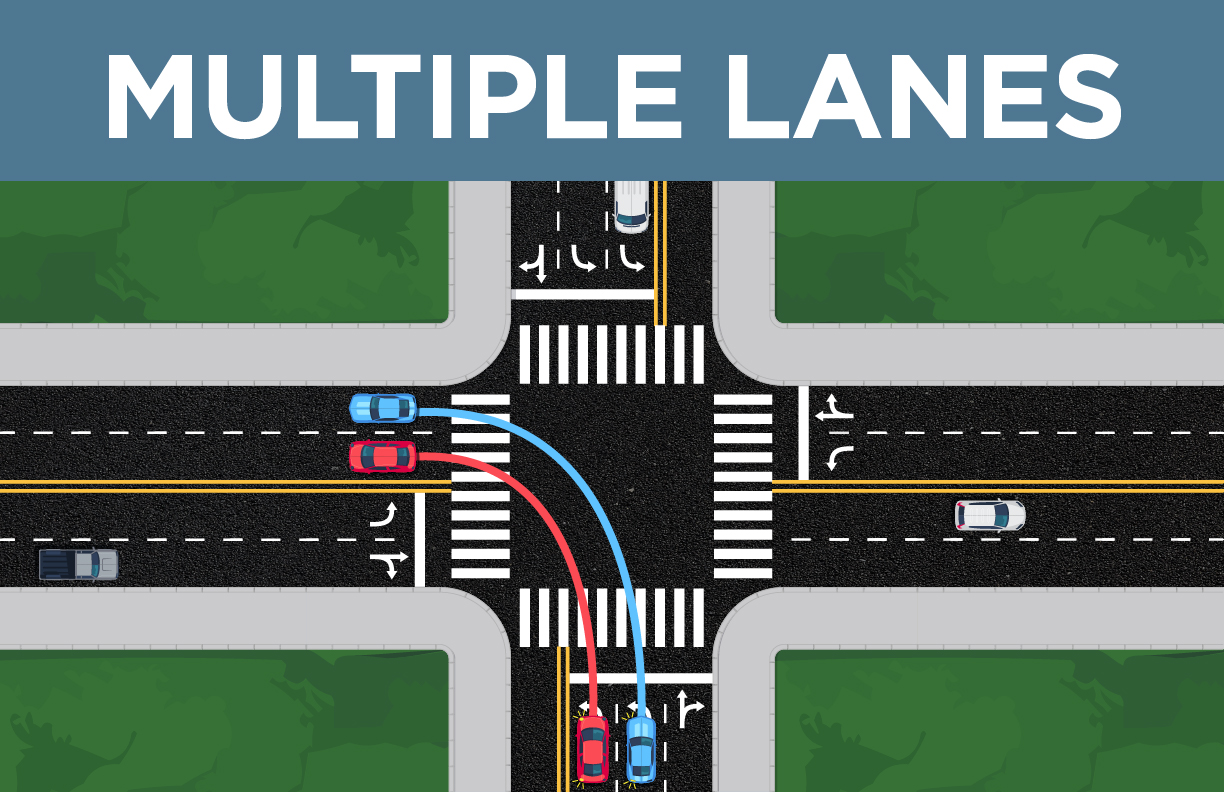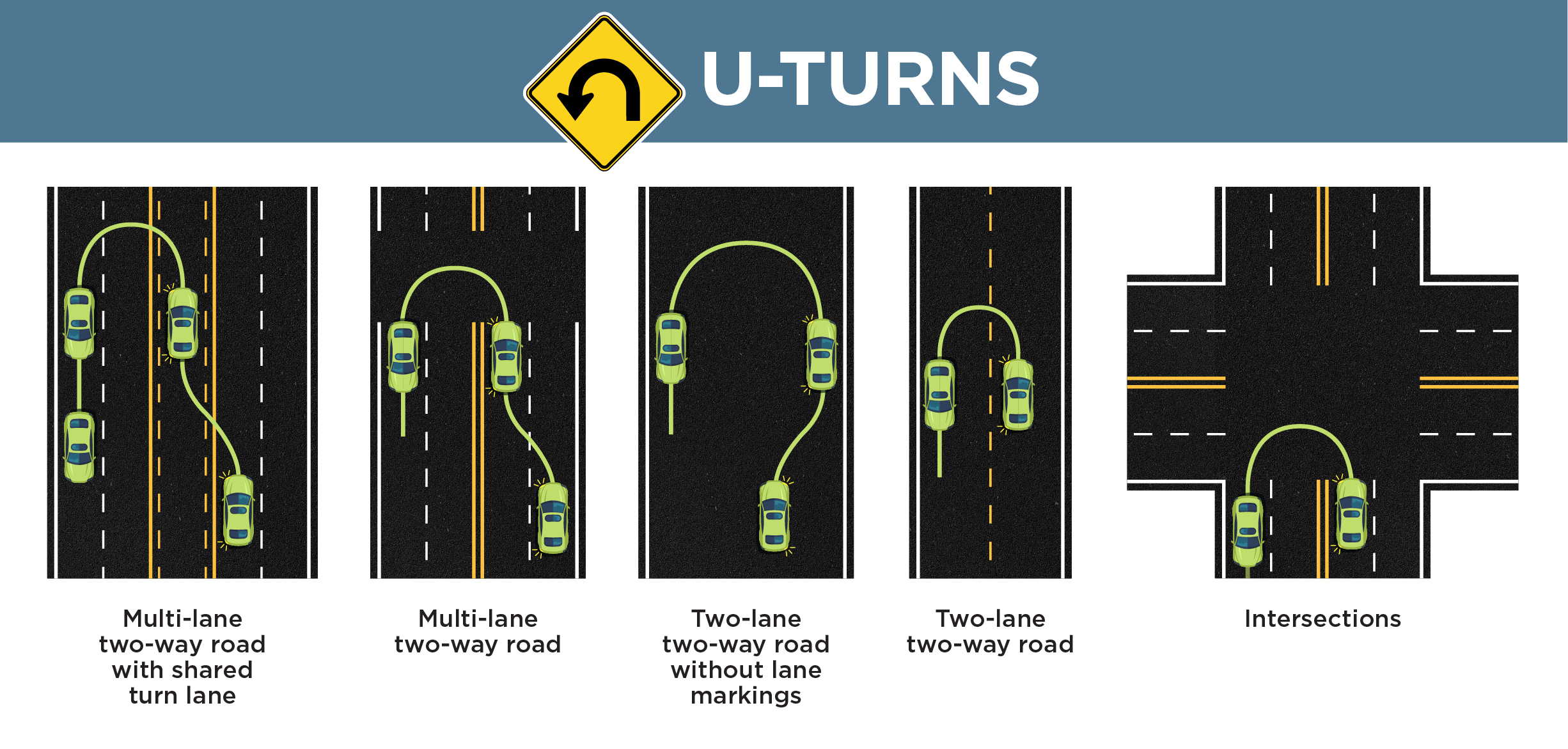Section 8: Basic Driving
Turns
During the driving skills test, you will be asked to make turns; you should:
- Approach the turn and check traffic in all directions.
- Use the correct turn signal.
- Brake smoothly and evenly.
- Safely get into the correct lane needed for the turn.
If you must stop before turning because of traffic, signal, or signs, smoothly come to a complete stop without skidding behind the stop line, crosswalk, or stop sign (whichever comes first.) A safe gap when stopping behind another vehicle is to stop where you can see the vehicle’s rear tires ahead of you. Keep the front wheels aimed straight ahead.
After turning, ensure you complete the turn in the correct lane and your turn signal has been cancelled. Accelerate to the speed of traffic, use your turn signal, check your blind spots by looking over your shoulder (head check), check your mirrors, and move into the right-most lane when it is safe to do so (if you are not already there.)

RIGHT TURNS
- Signal right for two (2) seconds.
- Perform a head check over your right shoulder.
- While turning perform a traffic check looking for pedestrians and other objects.
- Do not cut the corner or make a wide turn.
- Maintain a safe speed while turning.
- As you complete the turn, accelerate smoothly up to the posted speed.
LEFT TURNS
- Signal left for two (2) seconds.
- Perform a head check over your left shoulder.
- While turning, perform a traffic check by looking for pedestrians and other objects.
- Do not cut the corner or make a wide turn.
- Maintain a safe speed while turning.
- As you complete the turn, accelerate smoothly up to the posted speed.
MULTIPLE LANES
- Identify and enter the lane from which you will turn.
- Stay in that lane until the turn is completed.
- A person may not operate a vehicle over, across, or within any part of an island.


Two-Point Turn
A street alley or driveway can be used to turn around when you cannot drive around the block.
FORWARD TWO-POINT TURN
- Check that there is no oncoming traffic and signal a left turn.
- Move close to the center of the road and turn into the driveway or alley.
- Turn as near as possible to the right side of the drive.
- Stop as the vehicle’s rear clears the curb or edge of the driveway.
- Check for traffic, signal a right turn, and shift to reverse.
- When path is clear, back up while turning the steering wheel quickly to the right.
- Straighten your wheels and stop when you are centered in the lane.
- Shift to drive, cancel your signal, and drive away.
REVERSE TWO-POINT TURN
- Check that there are no vehicles behind you.
- Signal a right turn.
- Drive one car length past the driveway or alley.
- Put your right arm on the seat and look back over your right shoulder.
- Back into the driveway.
- Shift to drive and check traffic.
- When clear, signal left, turn left into the proper lane, and drive away.
Three-Point Turn
This should only be used on a two-lane road.
- Check the mirrors, head check, and signal a right turn.
- Stop on the right side of the road.
- Turn on left turn signal, check traffic, and head check over your left shoulder.
- When traffic is clear, turn hard left, drive to the other side of the road, and stop.
- Shift to reverse.
- Check traffic and head check over both shoulders.
- When traffic is clear, turn hard right and back up.
- Put your foot on the brake and shift to drive.
- Check traffic and head check.
- When traffic is clear, merge into the traffic flow and accelerate smoothly.
U-Turns
Each city has its laws concerning U-turns. Be sure you know the specific law of the city in which you are driving. A U-turn should only be made on a street or highway sufficiently wide enough to allow a turn to be made from the left-hand lane or just right of the center line or center of the street.
- Signal in the direction you are going to initiate the U-turn.
- Perform a head check over your shoulder in that direction.
- When traffic is clear, perform a traffic check while completing the turn.
- Continue down the road in the new direction. Cancel signal.

